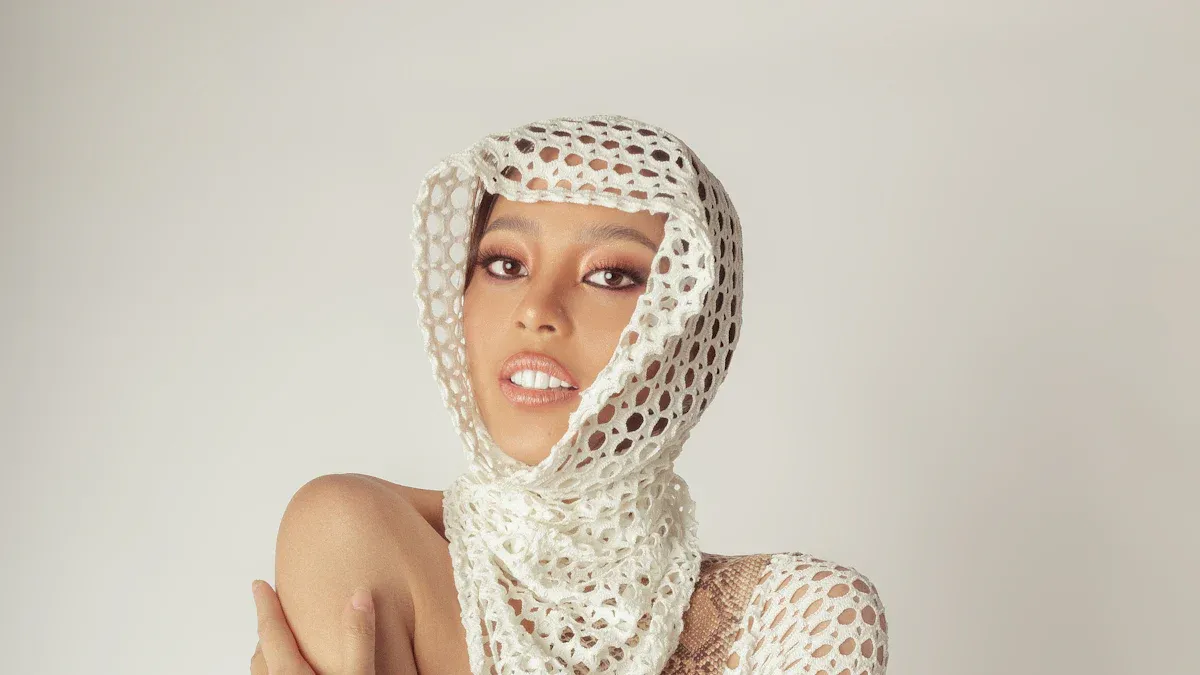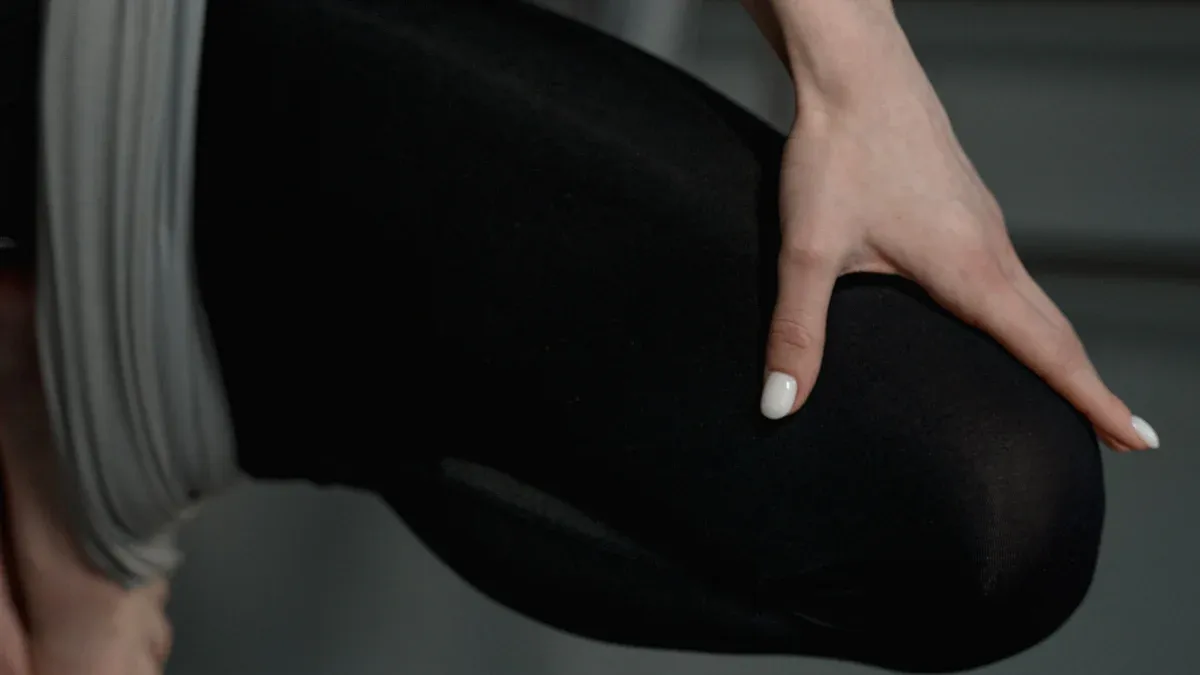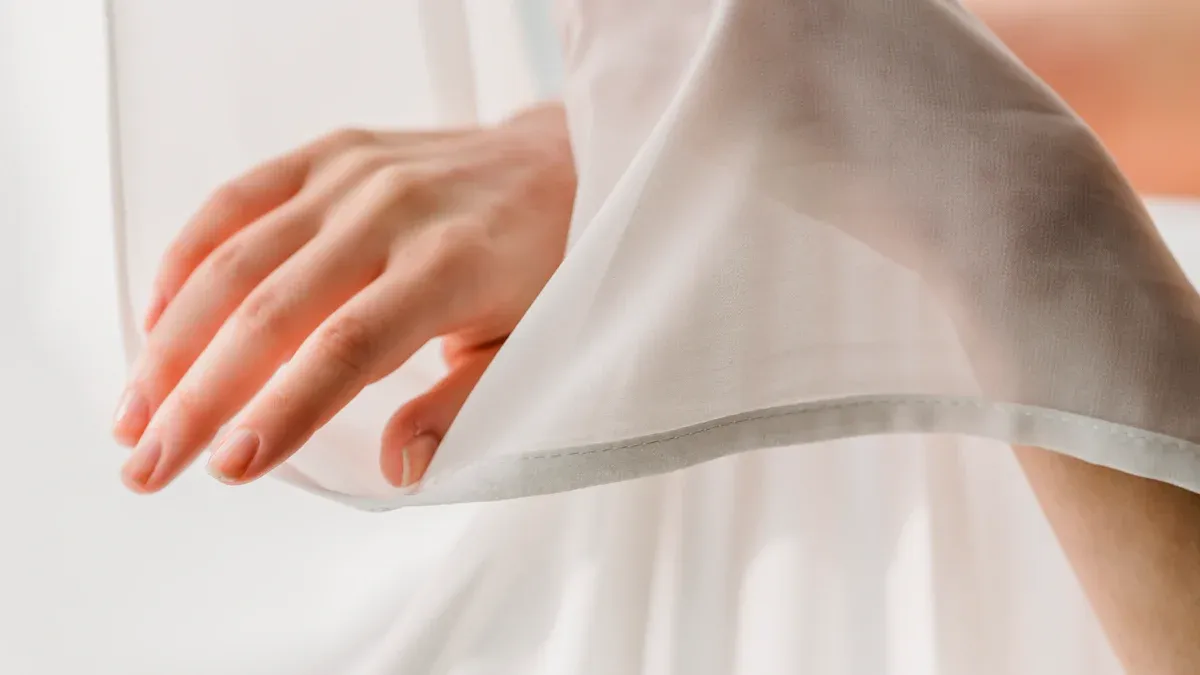
You notice how embroidery mesh fabric transforms simple designs into stunning works of art. The open weave gives each fabric a light, airy feel, making it perfect for warm climates or layered styles. Many designers choose this fabric for its versatility and ability to highlight detailed embroidery. You can use embroidery mesh fabric for both clothing and home decor projects. Its combination of elegance and practicality sets it apart from other fabric options.
Tip: Explore the versatility of embroidery mesh fabric by trying it in both fashion and decor projects.
Key Takeaways
- Embroidery mesh fabric offers breathability, lightness, and strength, making it ideal for warm weather and layered fashion or home decor.
- This fabric supports detailed embroidery designs while staying flexible and durable through repeated use and washing.
- Mesh fabric suits many projects, from elegant dresses and accessories to curtains, table runners, and creative DIY home accents.
- Proper handling, sewing techniques, and gentle care keep mesh fabric and embroidery looking fresh and lasting longer.
- Choosing trusted suppliers like Suerte ensures high-quality mesh fabric with customization options and excellent customer support.
Defining Embroidery Mesh Fabric
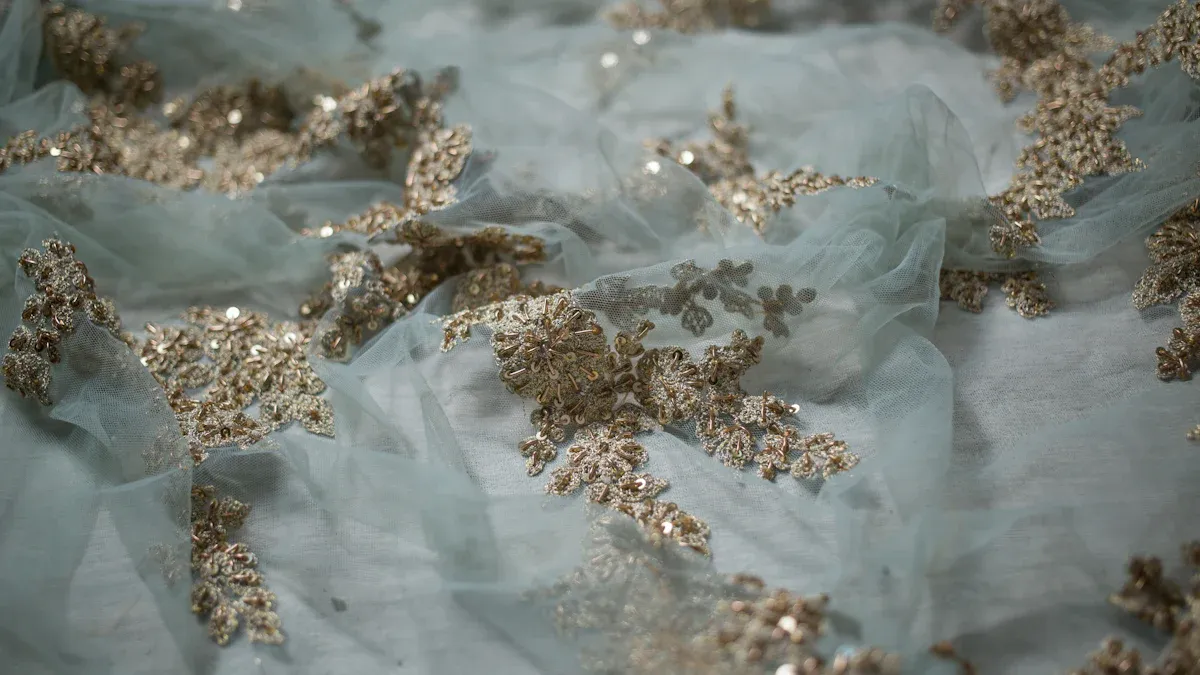
What Is Embroidery Mesh Fabric?
You encounter embroidery mesh fabric in many creative projects. This fabric features an open, net-like structure that allows air to pass through easily. You see it used as a base for decorative stitching, where the mesh supports intricate embroidery designs. Manufacturers create mesh fabric using both natural fibers, such as cotton and silk, and synthetic fibers, like polyester and nylon. The production process involves knitting, weaving, or twisting yarns to form geometric holes. These holes can be square, hexagonal, or octagonal, giving each mesh fabric a unique look and feel.
The table below outlines the main materials and construction methods for mesh fabric:
| Aspect | Details |
|---|---|
| Main Materials | Cotton, linen, silk, polyester, nylon, spandex, rayon, Dacron, acetate |
| Net Fabric Formation | Yarns knitted, knotted, looped, or twisted at intersections forming open mesh with geometric holes |
| Construction Methods | Knitting (Tricot, Raschel, Bobbinet), weaving (canvas, gauze) |
| Mesh Hole Shapes | Square, hexagonal, octagonal; tulle, bobbinet, fishnet |
| Finishing Treatments | Sizing (starch or resin) applied to stabilize fabric for embroidery |
Note: Synthetic mesh fabrics often start as petroleum-based polymers, which are melted and spun into filaments before being formed into mesh fabric.
Core Characteristics and Types of Mesh Fabric
You notice several mesh fabric characteristics that make this material stand out. Mesh fabric feels lightweight and breathable. The open structure keeps you cool and comfortable. You can find mesh fabric in many forms, each with its own strengths.
Here is a comparison of common mesh fabric types and their uses:
| Mesh Fabric Type | Structure Characteristics | Typical Applications |
|---|---|---|
| Polyester Mesh | Durable, sunlight resistant, breathable | Sportswear, outdoor gear |
| Nylon Mesh | Lightweight, strong, breathable | Athletic gear, equipment |
| Cotton Mesh | Soft, moisture-absorbing | T-shirts, summer dresses |
| Tulle | Fine, delicate, small holes | Veils, gowns, tutus |
| Power Mesh | Dense, elastic, 4-way stretch | Support garments, lingerie |
| Fishnet | Loose weave, large holes, elastic | Dancewear, accessories |
You select mesh fabric based on your project’s needs. For example, tulle works well for delicate overlays, while power mesh provides support in activewear. Each type offers a different balance of stretch, durability, and appearance. When you choose embroidery mesh fabric, you gain access to a world of creative possibilities.
Unique Qualities of Embroidery Mesh Fabric
Breathability and Lightweight Structure
You notice how mesh fabric stands out for its exceptional breathability. The open structure of mesh allows air to flow freely, keeping you cool and comfortable in any setting. When you compare mesh fabric to other lightweight options like chiffon or tulle, you see clear differences. Chiffon feels soft and drapes well, but it does not offer the same level of ventilation or durability as mesh. Tulle, while airy and delicate, cannot match the airflow and strength of mesh fabric.
Scientific studies show that mesh fabric provides excellent air permeability and moisture-wicking abilities. The open holes in the mesh let air and water vapor pass through easily, making this fabric ideal for warm weather and active lifestyles. Even after embroidery, the mesh fabric maintains high airflow and comfort, which is important for sensitive uses like infant clothing.
You can see the comparison in the table below:
| Feature | Tulle | Mesh |
|---|---|---|
| Structure | Fine net, soft, delicate | Open hole, strong, stable |
| Breathability | Soft and airy but less durable | High breathability and airflow |
| Typical Use | Fashion layers, bridal wear | Sportswear, summer clothing |
Mesh fabric’s lightweight nature means you can layer it without adding bulk. You get a fabric that feels almost weightless but still provides structure and support. The unique design of mesh fabric ensures you stay comfortable, whether you use it for clothing or home decor.
Decorative and Customization Potential
You discover endless creative possibilities with mesh fabric. The open weave of mesh makes it a perfect base for embroidery and other decorative techniques. You can add intricate patterns, bold colors, or delicate motifs, all while keeping the fabric light and airy. Mesh fabric allows you to showcase detailed designs that stand out against the open background.
Customizing mesh fabric requires special care. You need to choose stabilizers that support the open structure and prevent stretching. Designs must have stitches larger than the mesh holes to ensure durability. This process differs from other fabrics like canvas or satin, which can handle denser embroidery and require less stabilization. Mesh fabric’s unique properties challenge you to think creatively and adapt your techniques.
Tip: When working with mesh fabric, use wash-away stabilizers and gentle hooping methods to protect the fabric and achieve the best results.
The versatility of mesh fabric means you can use it for everything from fashion to home decor. You can create one-of-a-kind garments, accessories, or decorative accents that reflect your personal style.
Durability and Flexibility
You benefit from the impressive durability and flexibility of mesh fabric. The interlocking yarns in mesh create a strong yet lightweight material. Synthetic fibers like polyester and nylon add extra strength, making mesh fabric resistant to wear and moisture. You can stretch and bend mesh fabric many times without losing its shape or integrity.
Laboratory tests confirm that mesh fabric holds up well under repeated use. Embroidered mesh fabric withstands many cycles of stretching and washing with only minor changes, such as small wrinkles. Even after multiple washes, mesh fabric maintains its structure and function. You can rely on mesh fabric for long-lasting performance in both fashion and decor.
Note: Proper care, such as gentle washing and careful storage, helps extend the life of mesh fabric and any embroidery you add.
Mesh fabric’s flexibility lets you use it in a wide range of projects. You can create garments that move with you or home accents that keep their shape over time. The combination of strength and adaptability makes mesh fabric a smart choice for any creative project.
Embroidery Mesh Fabric in Fashion
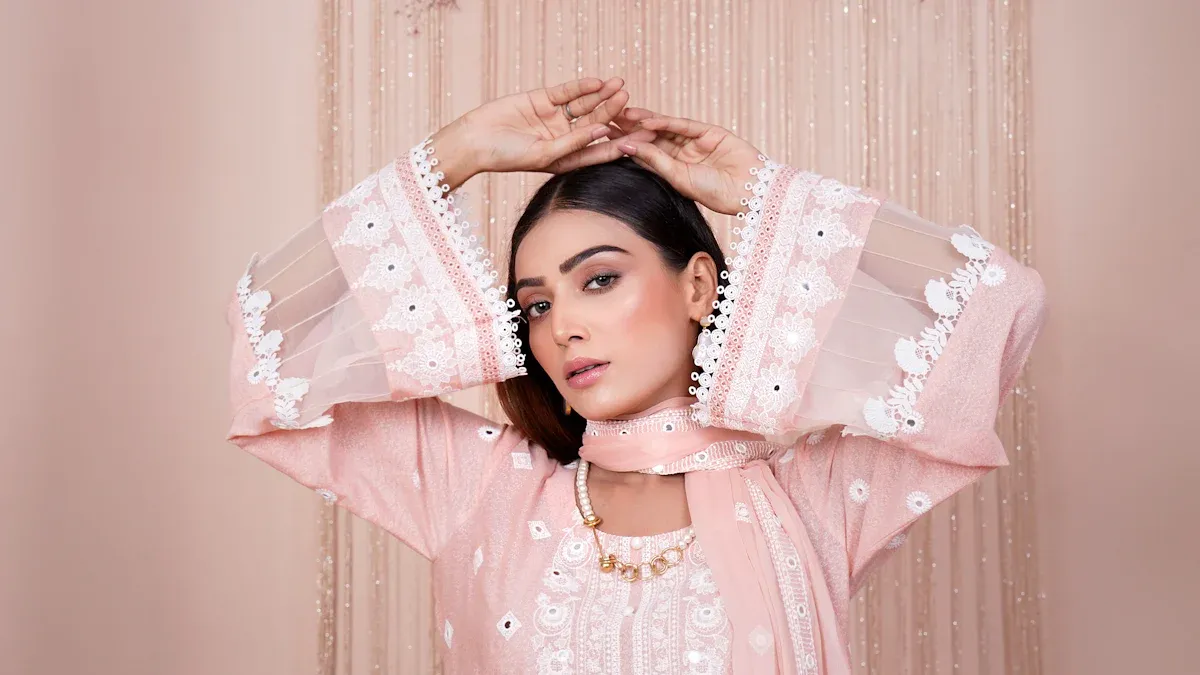
Apparel: Dresses, Tops, and Skirts
You see mesh fabric for clothing featured in many modern collections. Designers choose mesh for its breathability, stretch, and comfort. The open structure keeps you cool and dry, even during long events. You notice that mesh fabric adds elegance and delicacy to formalwear, especially bridal gowns and evening dresses. Leading designers like Zuhair Murad and Carolina Herrera use embroidery mesh fabric to create romantic, refined silhouettes. Elie Saab and Valentino also highlight mesh in their collections, using it to add texture and unique motifs.
| Feature | Stretch Mesh Fabric (including Embroidery Mesh) | Traditional Fabrics |
|---|---|---|
| Breathability | Efficient air circulation, keeps wearer cool and dry | Prone to heat and humidity buildup |
| Moisture Management | Quick sweat evaporation, maintains dryness | Less efficient moisture removal |
| Elasticity | Dynamic stretch, maintains shape | Limited stretchability |
| Comfort & Flexibility | Superior comfort, freedom of movement | Less adaptive to movement |
| Durability | Long-lasting wear | Varies, often less durable |
| Style Versatility | Supports layering, sheer effects, creative designs | Limited for sheer or layered effects |
| Support & Compression | Provides shaping and support | Lacks support features |
You can layer mesh fabric to create sheer effects and add depth to dresses, tops, and skirts. The fabric’s stretch allows your garments to move with you while keeping their shape. Mesh fabric supports both body shaping and comfort, making it ideal for special occasions.
Accessories: Veils, Scarves, and Bags
You find mesh fabric in many accessories that enhance both style and function. Designers use embroidered mesh for veils, scarves, and shawls. The fabric feels delicate, lightweight, and sheer, giving bridal accessories a soft, elegant look. Floral embroidery and sequins add sparkle and visual interest. You can drape a mesh scarf for a light cover or choose a mantilla veil for a classic bridal appearance.
- Embroidered mesh fabric appears in handbags, clutches, and even shoes.
- Beaded mesh adds a luxurious touch, making accessories stand out at special events.
- The fabric’s flexibility and shimmer make it popular for performance costumes and high-end lingerie.
- Mesh accessories remain lightweight and comfortable, perfect for all-day wear.
You notice that mesh fabric elevates accessories beyond simple function, turning them into statement pieces.
Embellishments and Layering Techniques
You can use many techniques to embellish mesh fabric. Hand embroidery with colored threads adds delicate detail. Sequins, beads, and rhinestones bring dimension and shine. You attach these elements by hand or with a sewing machine, using special needles and threads to protect the mesh.
Tip: Stabilize mesh fabric with fusible backings or magnetic hoops to keep your designs crisp and prevent stretching.
- Use running or tatami stitches instead of dense satin stitches to maintain flexibility.
- Apply appliqué layering for depth without bulk.
- Remove beads from seam allowances before sewing to avoid damage.
- Pin and baste layers carefully to keep alignment.
You can also use silk organza as an underlining to stabilize mesh fabric. This method helps your garments keep their shape and structure. By combining these techniques, you create garments and accessories that are both beautiful and durable.
Popular Products: Suerte and Other Leading Brands
When you explore embroidery mesh fabric, you find several brands that set industry standards. Each brand brings unique strengths to the market. The table below highlights some of the top manufacturers and what makes them stand out:
| Brand / Manufacturer | Market Position | Distinguishing Features |
|---|---|---|
| Custom Weft Insert Interlining Factory | Leading manufacturer and supplier | Focus on quality, innovation, and customer satisfaction. Advanced technology, strong R&D, and custom solutions. |
| China Water Jet Interlining Manufacturer (CWJIM) | Established leader in water jet interlining | Innovative designs for flexibility and durability. Eco-friendly materials and energy-efficient production. |
| Self Embroidered Fabric Producer | Top producer of self-embroidered fabric | High craftsmanship, premium materials, and a wide variety of designs. Personalized solutions and innovation. |
You notice that Suerte Textile stands out among these leaders. Suerte uses advanced production technology to create stretch mesh fabrics that combine breathability, durability, and flexibility. You benefit from fabrics that keep their shape and performance over time, thanks to high-quality blends of nylon, polyester, and spandex.
- Suerte offers ergonomic fits and smart ventilation panels, making their mesh fabrics ideal for activewear and outdoor gear.
- You can choose from bold designs and extensive customization options, including digital printing, embroidery, and dyeing.
- Suerte responds quickly to your needs, with fast sample delivery (3-5 days) and flexible order sizes.
- You receive support from dedicated account managers and 24-hour online service, ensuring a smooth experience from start to finish.
- Suerte’s ethical manufacturing and transparent sourcing build trust and reliability.
Tip: When you select Suerte, you gain access to a one-stop service that covers everything from pattern design to production optimization.
Suerte’s commitment to quality, innovation, and customer satisfaction positions it as a top choice for embroidery mesh fabric. You can rely on their expertise and comprehensive support for both fashion and decor projects.
Mesh Fabric for Home Decor
Curtains and Window Treatments
You can transform any room with mesh fabric curtains and window treatments. Mesh lets gentle sunlight filter through while maintaining privacy. The soft, velvet-like texture adds depth and elegance to your windows. You will find that mesh fabric stands up to daily use because of its durability and wear resistance. Cleaning is simple, and the fabric dries quickly, making it perfect for busy homes.
Here is a comparison of features and benefits for mesh fabric curtains:
| Feature | Benefit for Curtains and Window Treatments |
|---|---|
| Soft, velvet-like texture | Adds depth, elegance, and a luxurious feel to windows |
| Mesh base | Allows gentle sunlight to filter through while maintaining privacy |
| Durability and wear resistance | Flock adhesives enhance strength, making curtains last longer |
| Easy maintenance | Quick drying, simple cleaning, and stain resistance suitable for busy homes |
| Customization options | Wide range of colors, patterns, embroidery, and digital printing available |
| Moisture, flame, and stain resistance | Suitable for active households and various environments |
| Layering capability | Can be combined with other fabrics to enhance design flexibility |
You can layer mesh with other materials to create unique effects. Mesh fabric window treatments give you both style and function in your living spaces.
Table Settings and Decorative Runners
Mesh fabric brings elegance to your dining table. You can choose from a variety of embroidered runners and overlays that suit any occasion. Mesh runners add texture and color, making your table stand out during family meals or special events.
Some creative examples include:
| Example Description | Fabric/Style | Embroidery Details | Occasion/Use |
|---|---|---|---|
| Vintage doily runner | Hand-sewn, invisible stitches | White and ivory finish | Weddings, special occasions |
| Navy blue lace table runner | Lace with floral motif | Navy blue thread floral embroidery | Weddings, elegant dinners |
| Grey lace table runner | Wide lace | Handmade embroidery | Christmas, weddings |
| Mint lace table runner | Lace with floral theme | Floral embroidery | Weddings, events |
| Burgundy wine lace table runner | Wine/burgundy fabric | Floral embroidery | Weddings |
| Pink lace table runner | Pink fabric | Floral embroidery | Weddings |
| Champagne lace trim runner | Delicate fabric | White floral embroidery | Weddings |
| Peacock lace table runner | Lace floral pattern | Turquoise and violet colors | Dining/living room decor |
| Embroidered holly Christmas table runner | Embroidered holly motif | Traditional Christmas embroidery | Holiday table setting |
| Polyester table runner with metallic embroidery | Polyester | Metallic embroidered border | Formal dinners, versatile use |
You can use mesh fabric to create table runners that match your personal style. These pieces add a touch of luxury to your stylish home decor.
Wall Art and Accent Panels
You can use mesh fabric to create stunning wall art and accent panels. Embroidered mesh adds depth, texture, and intricate patterns to your walls. This technique brings warmth and a personalized touch to any room. You can stretch mesh over frames or combine it with beads and sequins for extra visual interest. Mixing mesh with other textures makes your space feel more inviting and sophisticated. Mesh fabric wall art serves as a focal point, enhancing the overall look of your interior.
Tip: Try framing embroidered mesh panels to create unique art pieces that reflect your taste.
DIY Projects and Custom Home Accents
You can unlock endless creative possibilities with diy projects using mesh fabric. Many craft enthusiasts choose mesh for its lightweight feel and adaptability. You find that mesh works well for both simple and advanced diy ideas. Whether you want to refresh your living space or add a personal touch, mesh fabric gives you the flexibility to experiment.
Here are some of the most popular diy projects and custom home accents you can try with mesh fabric:
| Project Type | Description | Benefits and Features |
|---|---|---|
| Wall Art | Uses mesh fabric’s transparency and layering to create three-dimensional, light-enhancing decor | Lightweight, easy to hang, adds depth and texture, ideal for contemporary home decoration |
| Storage Solutions | Includes bins and organizers made from mesh fabric | Breathable, durable, prevents moisture buildup, customizable, functional and attractive |
| Furniture Covers | Covers made from mesh fabric to protect furniture | Allows air circulation, prevents mildew, durable, machine washable, lightweight and customizable |
| Embroidery and Appliqué | Creative stitching techniques on mesh fabric using fine needles and stabilizers | Adds visual interest and depth, maintains fabric integrity, enables unique layering effects |
You can start with wall art by stretching mesh over a frame and adding embroidery or appliqué. This project lets you play with color and texture. Storage bins made from mesh help you organize your space while keeping items visible and fresh. You can also sew furniture covers from mesh to protect your chairs and sofas. These covers allow air to flow, which helps prevent mildew.
Many diy fans enjoy using mesh for embroidery projects. You can create custom designs that add depth and personality to your home. Mesh fabric supports detailed stitching and layering, making each piece unique. If you want to try something new, combine mesh with other materials for a mixed-media effect.
Tip: When you work on diy mesh projects, use stabilizers and sharp needles to keep your fabric smooth and your designs crisp.
You can transform your home with diy mesh accents that reflect your style and creativity. Mesh fabric offers a practical and stylish foundation for any project.
Tips for Working with Embroidery Mesh Fabric
Cutting and Handling Best Practices
When you work with mesh, you need to prevent fraying and distortion. Start by stabilizing the fabric. Soak mesh in a gelatin solution to stiffen it temporarily. This makes cutting and stitching easier. You can also use sheer overlays like nylon net or silk crepeline to protect delicate mesh surfaces.
- Use pinking shears or seal edges with clear nail polish or fabric sealant to stop fraying.
- Try masking tape along the edges before cutting for extra support.
- Choose overcasting, French seams, or flat-felled seams to enclose raw edges.
- Use cut-away stabilizers and adhesive sprays to support mesh during embroidery.
- Magnetic hoops help distribute tension evenly and prevent hoop marks.
Always wash and iron mesh before starting your sewing projects. This step reduces shrinkage and removes wrinkles. Test your methods on scraps to find the best approach for your specific mesh.
Tip: Keep mesh taut in the hoop, but avoid over-tightening to prevent marks or distortion.
Sewing and Embroidery Techniques
You can achieve professional results with mesh by following a few key sewing techniques. Adapt your patterns by making full pieces instead of cutting on the fold. Mark mesh with small rotary cutter nicks instead of pins to avoid damage.
- Use a fine or ballpoint needle for delicate mesh.
- Select lightweight polyester or nylon thread for smooth stitching.
- Choose straight, zigzag, or stretch stitches based on your mesh type.
- Employ a walking foot to feed mesh evenly through your machine.
- Place tissue paper or specialty stabilizers under seams to prevent puckering.
- Trim seams to about 1/4 inch to avoid bulk.
- Stabilize shoulder seams with fusible tricot tape.
- Stay-stitch necklines and use stretch bands for clean finishes.
- Press necklines with a tailor’s ham for smooth shaping.
- Finish seams with serging, pinking shears, or French seams.
Handle mesh gently during sewing projects. Practice on scraps to get comfortable with the fabric’s unique properties.
Care and Maintenance Guidelines
Proper care keeps your mesh looking new. Always wash mesh by hand in cold water with mild detergent. Turn garments inside out and use a mesh laundry bag if you choose machine washing. Select the delicate cycle and avoid the spin cycle.
| Care Aspect | Recommended Practices |
|---|---|
| Washing | Hand wash preferred; use mesh bag and delicate cycle with cold water if machine washing |
| Drying | Air dry flat on a towel; avoid hanging and direct sunlight; use low heat dryer only if necessary |
| Ironing | Use low heat; iron inside out; use a pressing cloth or steam; avoid direct heat on embroidery |
| Storage | Clean before storing; fold with acid-free tissue paper; store in a cool, dry place; avoid plastic bags |
Note: Avoid bleach and fabric softeners. Handle embroidered areas gently to prevent friction damage.
If you notice puckering, steam and reshape the mesh while damp. Secure loose threads with glue or careful trimming. Store mesh items on padded hangers or folded with tissue paper to prevent creasing and damage.
You see how embroidery mesh fabric brings beauty and function to your projects. This material adapts to many styles, from bold fashion pieces to elegant home accents. You unlock creative options with every use. When you choose a trusted supplier like Suerte, you ensure quality and innovation for every design. Explore new ideas and let your creativity shine.
FAQ
What makes embroidery mesh fabric different from regular mesh?
You see embroidery mesh fabric as a base for decorative stitching. The open weave supports detailed designs. Regular mesh often serves functional uses, like sportswear. Embroidery mesh combines beauty and strength, making it ideal for both fashion and decor.
Can you wash embroidery mesh fabric in a washing machine?
You can wash embroidery mesh fabric in a machine using a mesh laundry bag. Select the delicate cycle and cold water. Always turn items inside out. Air dry flat for best results. Avoid bleach and fabric softeners.
How do you prevent embroidery mesh fabric from fraying?
You prevent fraying by sealing the edges. Use pinking shears, fabric sealant, or clear nail polish. Overcasting or French seams also help. Stabilize the fabric before cutting for cleaner results.
Is embroidery mesh fabric suitable for beginners?
You find embroidery mesh fabric easy to use with basic sewing skills. Start with simple projects like scarves or table runners. Use stabilizers and sharp needles. Practice on scraps to build confidence.
What types of embroidery work best on mesh fabric?
You achieve the best results with light, open designs. Choose running stitches, appliqué, or simple motifs. Avoid dense patterns. Use wash-away stabilizers to support the fabric during stitching.
Tip: Always test your embroidery design on a scrap piece of mesh before starting your main project.

